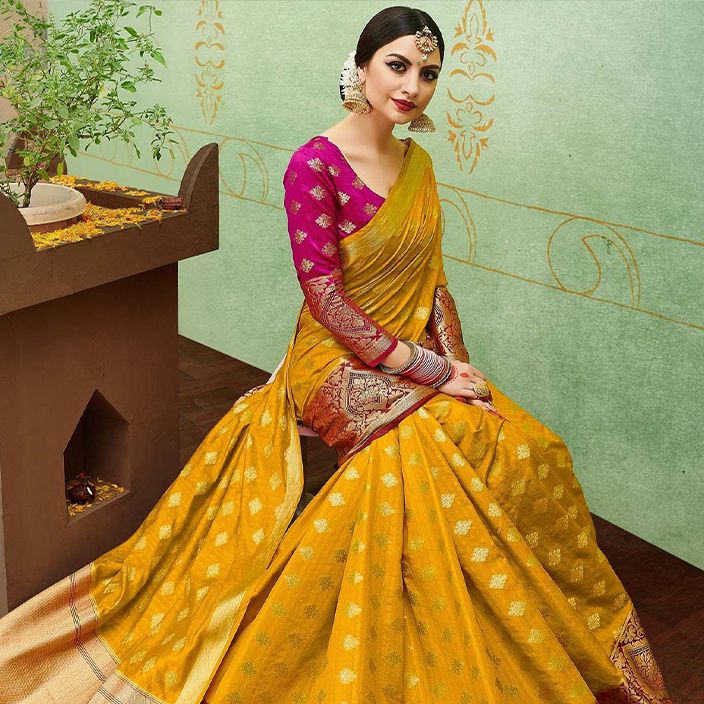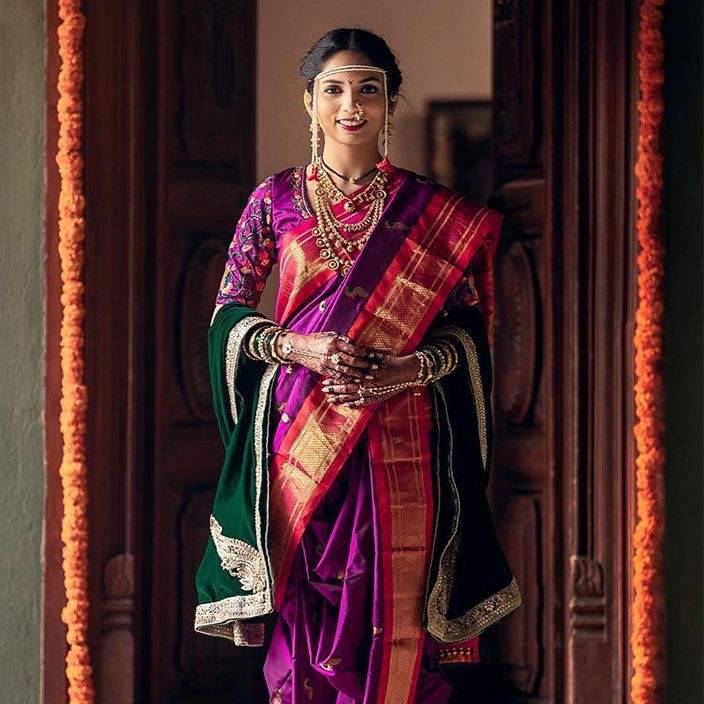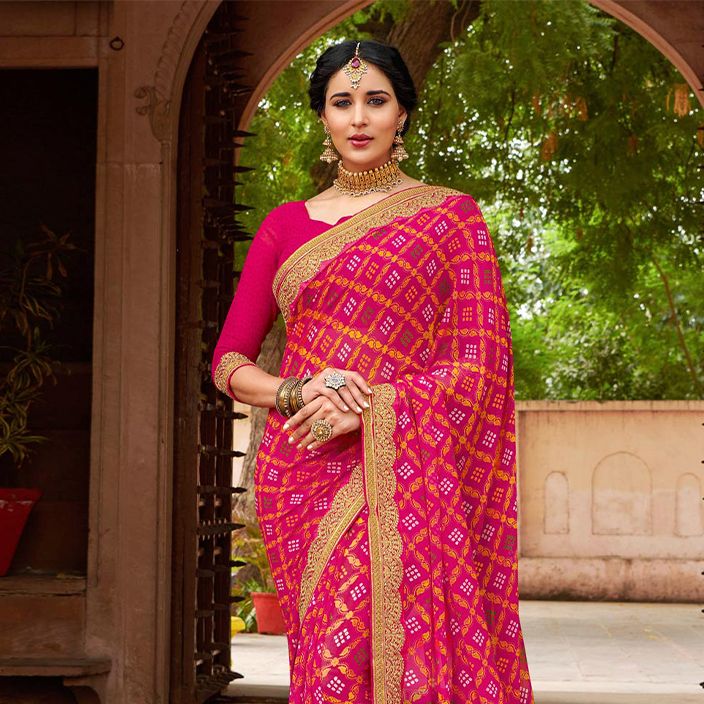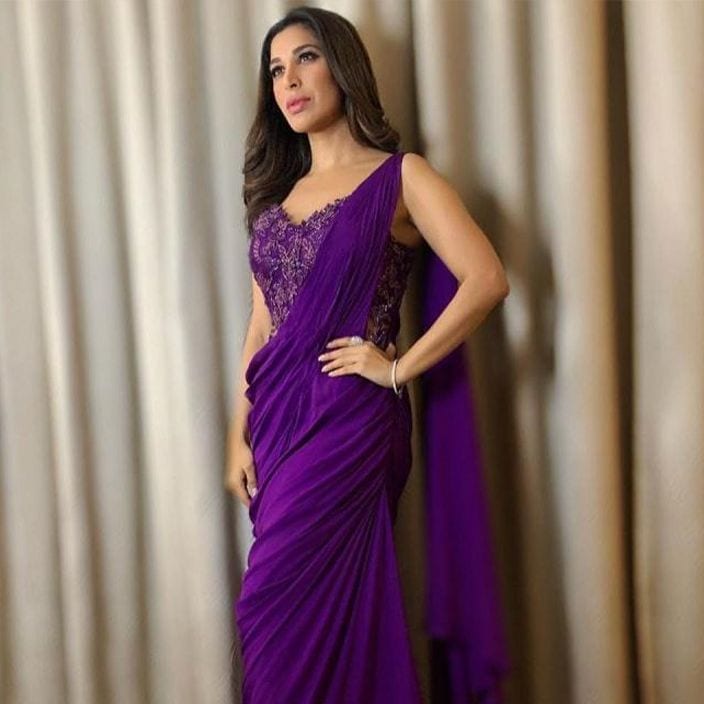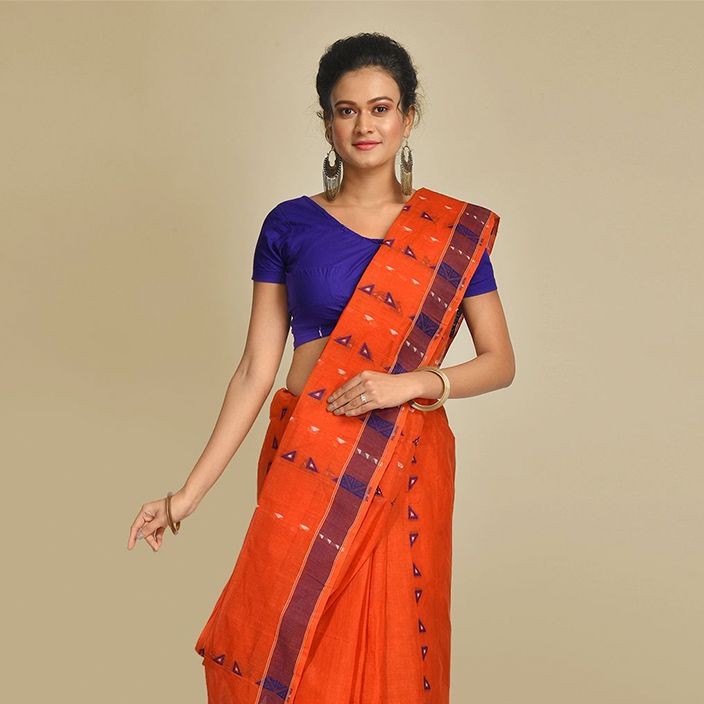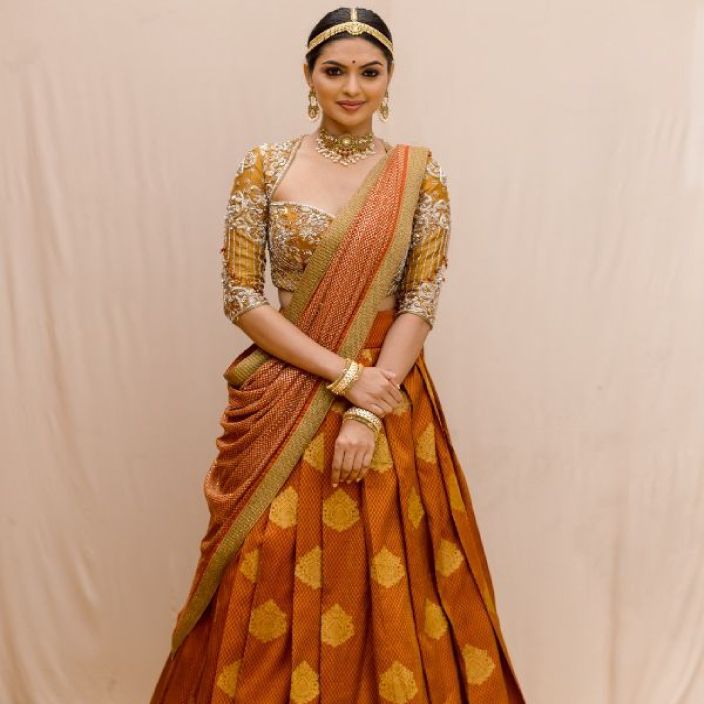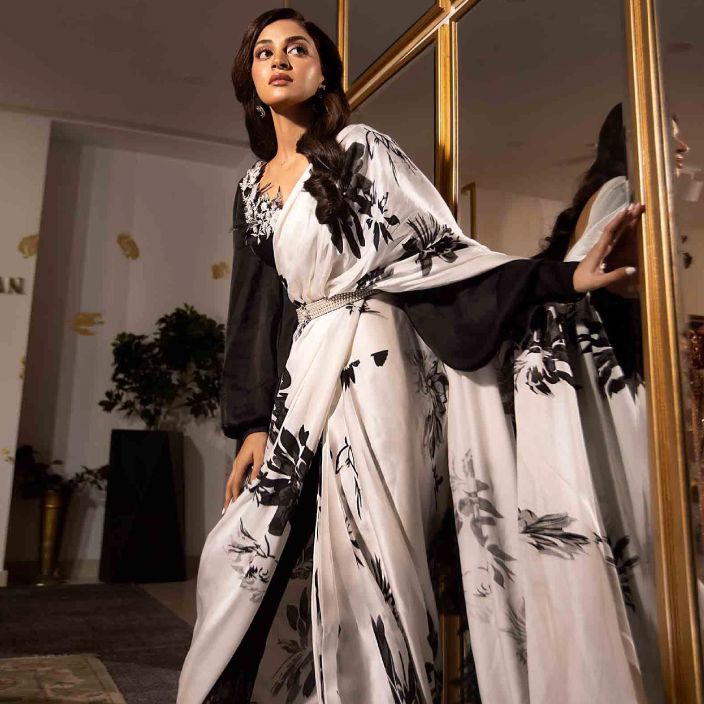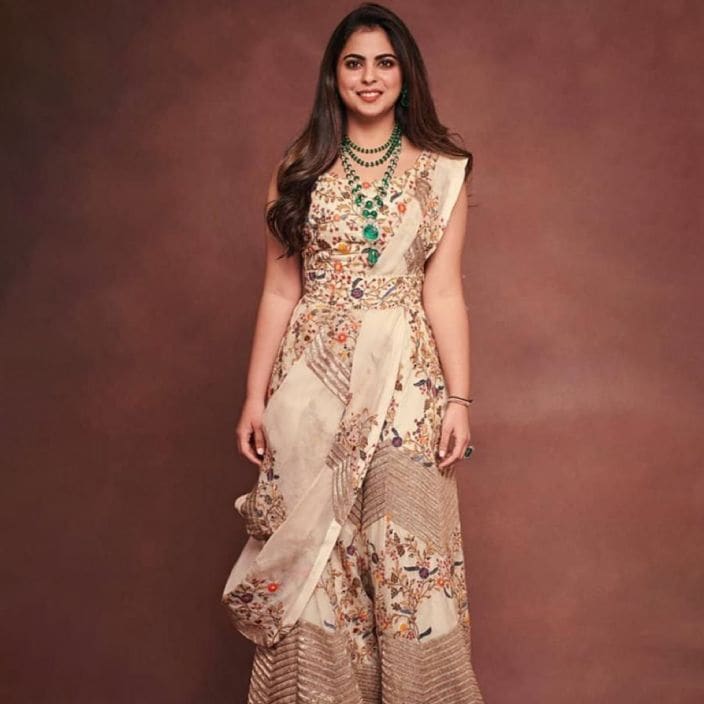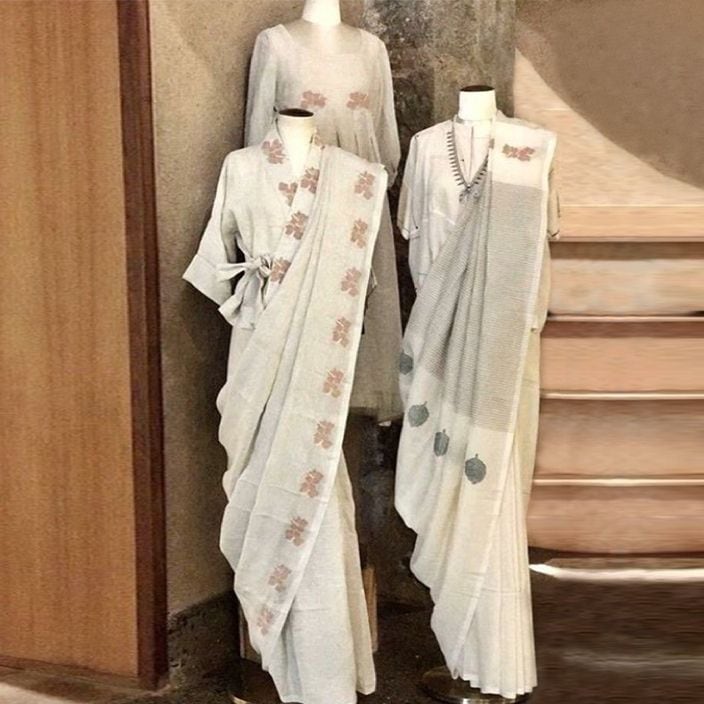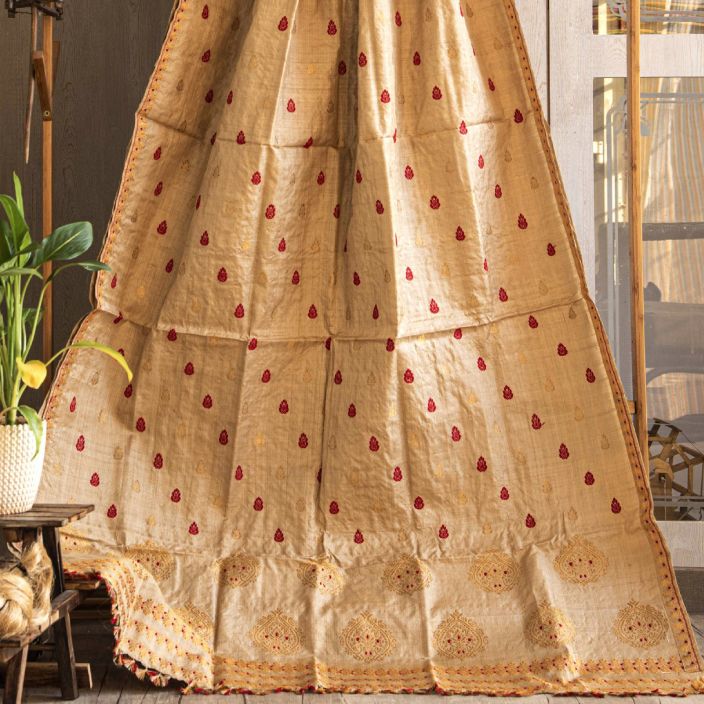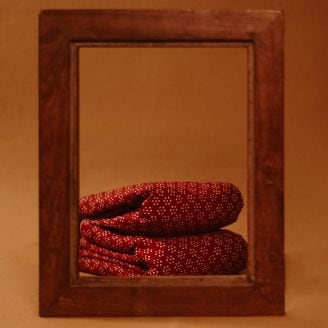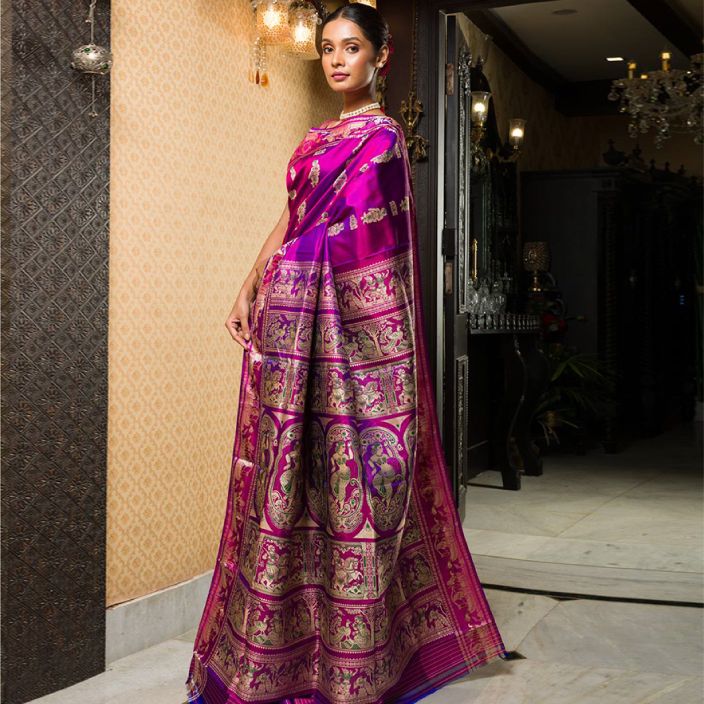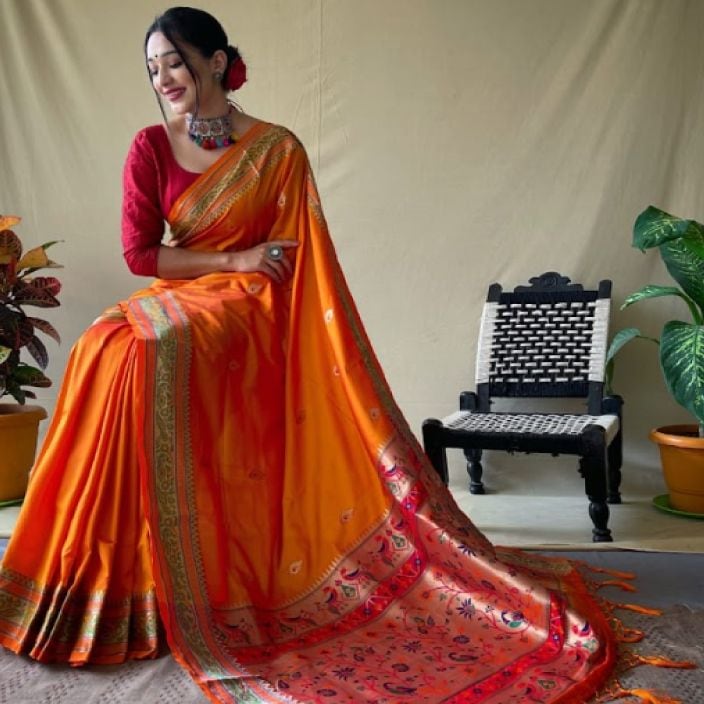For best prices and early deliveries, WhatsApp us at. 918488070070
Sarees
The saree is symbolic of an Indian woman's grace and the heritage wear of the Indian subcontinent. A quintessential attire of Indian women, the saree is a long rectangular unstitched piece of fabric customized to a length varying from 5 to 9 yards. Baring the midriff, the saree is wrapped around the waist over a petticoat, with a long end draped over the shoulder and paired with a blouse.
History Of The Saree
The word saree is derived from 'Sati' in Sanskrit and Prakrit, which means 'strip of fabric'. The Buddhist Jain people, the Jatakas, referred to it as Sattika, similar to the Nivi draped saree worn by modern women. The first mention of saree was found in the symbolic Hindu book of hymns called the Rig Veda, depicting the draped attire on Indian sculptures through the six centuries. Chishti referred to the sarees as a magical unstitched garment. The pallu was also called pallav or aanchal traditionally.
The origin of sarees can be traced back to the Indus Valley Civilization of 2800-1800 BC. Records of those times depict priests and sages in draped attires, similar to sarees and thus, the garment is noted to have religious connotations as well. A prominent story that dates back to the time of Mahabharata is the incident of Draupadi's Vastra Haran. When Yudhishthira, the eldest brother amongst the five
Pandavas wagered Draupadi for a game of dice and lost, Duryodhana publicly assaulted Draupadi to insult the Pandavas. When Dushasana, Duryodhana's brother went ahead to disrobe her in public, she was wearing a saree. Draupadi began chanting and praying to Lord Krishna for help, seeing no one rescuing her in the court. Lord Krishna appeared there immediately and turned her saree into an unending piece of fabric, saving her dignity and pride. //while staying invisible to everyone but Draupadi
Significance & Symbolism
Sarees- though mostly worn across South Asia, Indian handicraft is known for being the powerhouse culture of weaving, dyeing and printing sarees, in various methods in nearly 30 regional types of sarees. Rich Benarasi silk sarees in shades of red, woven on antiquated wooden looms with gold zari threads is the traditional wedding attire of Indian brides to date - indigenous to the city of Varanasi. Whereas in the tropical regions of the South, the white mundu sarees have found relevance since the 19th-century. They have now been revamped into a range of colours in the subcontinent, owing to industrialization. In fact, the time-honed textile experts and craft advocates state that the handloom industry and embroidery sector in India receive a sizable business through saree weaving. The Annual Report of the Textile Ministry recorded about 11 million craftsmen.
Sarees are known for evoking a strong sentiment and nostalgia. The women of Indian families were identified for wearing a particular sarees of India through hallmark occasions. Besides, sarees are bequeathed to generations as a piece of heirloom, carried by brides as an integral part of their trousseau and adorned for various festivities of Indian culture. The saree even today, remains to be the “It “ attire of modern-day women, courtesy to Indian designers offering the classic six-yard, a modern spin with functional concepts and glamorous designing.
Draping Techniques
A saree can be draped in over a hundred ways but, the most common is the Nivi style, originated from Andhra Pradesh. It is worn with long pleats made at the waist centre and tucked around to allow fuss-free movement.
The traditional Bengali and Oriya women wear the saree without pleats, known as the “atpouro” style whereas, women of Gujarat and Rajasthan tuck the pleats at the waist, by bringing the loose end or, pallu across the right shoulder and tucking it at the right waist. This way of draping is locally called the “seedha pallu style”.
The ancient Maharashtrian and Konkani Kashta saree which consists of nine yards, is draped like the classic Nivi style but the pleats are tucked at the back, creating a dhoti style look. This style originated during historic times, when marathi women assisted warriors in battles and the dhoti style allowed them free leg movement.
The quintessential Tamil style, known as “Madisar” is worn with a nine yard saree. The draping requires an elaborate procedure, pleated from behind at the waist level.The fabric is taken from between the legs and the pallu is tucked at the front hence, covering the waist. Anciently, this style was only worn by married women of the Tamil community.
Hailing from another part of southern India, is the “Coorgi” or, “Kodagu” style worn by the women of Karnataka. On the other hand, women of Kerala wear a two-piece saree called the “ Mundu Neriyathum”. The Mundu is like a skirt wrapped around the waist, while the Neriyathu is the upper part, draped around the left shoulder with the blouse.
Tribal women and ones from ethnic groups of various regions, often wear a longer sarong, crossed around the shoulders and knotted around the nape of the neck.
Evolution Of The Saree
During British rule, the saree was transformed to suit the morality of Britishers. As they found saree without blouses immodest, the blouse and petticoat were introduced to be teamed with the Indian saree. During the 1920s, women adapted the style of wearing shorter length sarees with boots.
Around the 30s and 50s, during pre-independence era, the Nivi style of draping came into style. This style was patronised by the women of royal Indian families and later, became the classic way of draping
amongst common Indian women. Saree pins inspired by the brooches, adorned by British women were used to accessorize and enhance the look.
Sarees In Bollywood
Post-independence, from the 50’s to the 70’s, the emergence of Bollywood cinema introduced the trend of wispy chiffon sarees. The era’s influential heroines like Nutan, Madhubala, Nargis and Mumtaz served their own style sensibilities by draping patterns of sarees in dramatic fashion. Indian women were inspired by the eclectic style of saree draping and adapted them to their own individual styles.
Later in the 70’s and 80’s, with the rise of television and visual entertainment, the saree went through an influential metamorphosis. Bold colours and prints were favored by actresses and the same became accessible to the larger groups.
Wispy chiffons and georgette sarees were revived in the iconic cinema of Yash Chopra. A quintessential Yash Raj heroine was known to be clad in sheer sarees, dancing on snow-clad mountains. The bollywood-style glamour soon, reckoned with the women for their bold solid colours and the fluid sheer drapes.
From 90’s onwards, Indian sarees were on a league of their own. Popular fashion designers introduced bedecked net sarees. These alluring designer sarees were paired with open back blouses for an attractive appeal. The Super Models representing the country at prestigious beauty pageants adorned luscious yards, by Indian designers like Ritu Kumar and Abu Jani and Sandeep Khosla. The colour palette ranged from jewel tones to eccentric neons.
Sarees Today
As more decades passed, globally savvy women preferred sarees customized in couture concepts and started favoring the pre-pleated style. Designers offered a veritable rainbow of pre-draped hybrid sarees, saree gowns and lehenga sarees. Couturiers replaced the pleats with masterful drapes and introduced a contemporary spin to the ensemble.
While the classic six-yard saree draped in Nivi style remains a mainstay, conceptual sarees have acquired a sizeable fan-following in the market.
